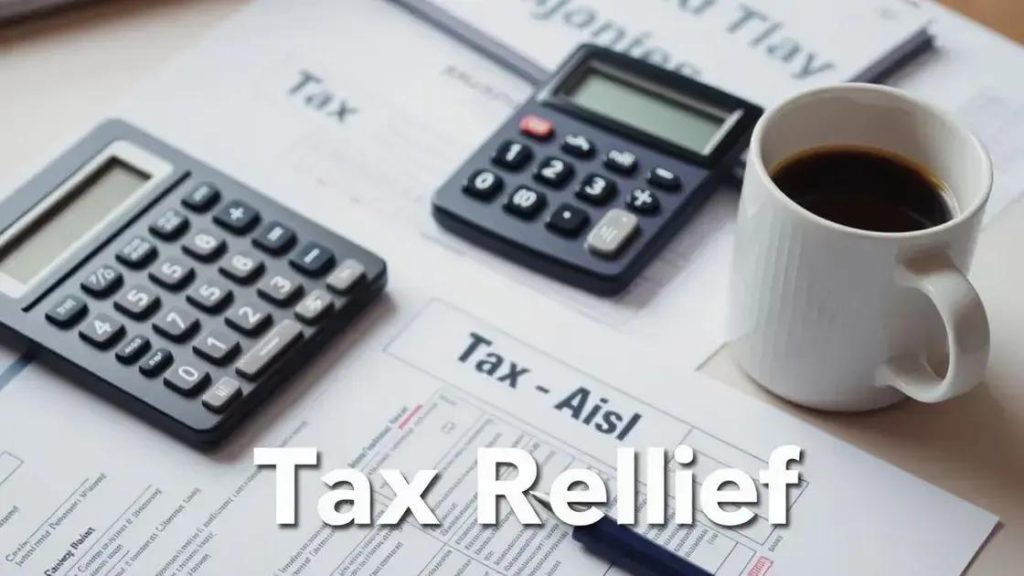Tax relief programs: Unlocking financial benefits for you

Anúncios
Tax relief programs are initiatives that help individuals and businesses reduce tax liabilities through various options like deductions, credits, and exemptions, available for different income levels.
Tax relief programs can be a game changer for many individuals and businesses looking to ease their financial strain. But what exactly do these programs entail? Let’s delve into the specifics of how you can benefit from them.
Anúncios
Understanding tax relief programs
Understanding tax relief programs can seem complicated, but these programs are designed to help individuals and businesses manage their financial responsibilities better. By using them, you can lower your tax burden and improve your financial situation.
There are various types of tax relief programs available. One common way is through deductions, which reduce your taxable income. Another method is tax credits, which decrease the amount of taxes owed directly. Understanding the differences between these options can empower you to take advantage of them.
Types of Tax Relief Programs
Here are some categories of tax relief programs that you might explore:
Anúncios
- Income-Based Programs
- Credit Programs
- Exemptions
- Deferral Programs
Income-based programs focus on giving relief to those who earn less, ensuring they aren’t overburdened by taxes. On the other hand, tax credits provide direct reductions. Exemptions allow certain situations, like dependent care, to lower your taxable income. Meanwhile, deferral programs can postpone your tax payments. Tax relief programs can also vary by state and local jurisdictions.
How to Qualify for Tax Relief Programs
To qualify for various tax relief programs, you usually need to provide specific documentation. Your income level, filing status, and other personal circumstances will affect eligibility. Generally, the higher your income, the fewer relief options you may have.
It’s also essential to remain organized. Keeping good records and documentation will make the application process smoother, which can lead to potentially significant savings. Consider consulting with a tax professional to help navigate these programs.
Utilizing tax relief programs effectively can save you money and provide greater peace of mind. By knowing your options and responsibilities, you can manage your finances and plan for a better future.
Types of tax relief options available
There are several types of tax relief options available to taxpayers, each designed to address different financial situations. Understanding these options can greatly help in managing your tax responsibilities.
The first major type is **deductions**, which reduce your taxable income. Common deductions come from mortgage interest, state taxes, and medical expenses. Utilizing these deductions can lower the amount of tax you owe.
Tax Credits
Another significant option is **tax credits**. Unlike deductions, which decrease your taxable income, credits directly reduce the amount of tax owed. Some popular credits include:
- Earned Income Tax Credit (EITC)
- Child Tax Credit (CTC)
- Education Credits
These credits are particularly beneficial as they can lead to refunds even if you owe no taxes. Tax credits often vary based on specific criteria, so checking eligibility is crucial.
Special Exemptions
Exemptions are another way to achieve tax relief. They allow specific personal circumstances to lower your taxable income. For instance, there are exemptions for dependents that can significantly benefit families.
Some other options include **deferrals**, which allow taxes to be postponed to a later date. This can be advantageous for those expecting a better financial situation in the future.
Being aware of all the tax relief options is essential in planning your financial future. By taking advantage of the right programs, you can effectively manage your tax liabilities and enhance your financial health.
How to qualify for tax relief programs

Knowing how to qualify for tax relief programs can make a significant difference in reducing your tax burden. This process often involves meeting specific criteria set by tax authorities.
First, determine which kind of tax relief program you are interested in. Each program has its own requirements. Common factors include your income level, family size, and financial situation. Gathering necessary documents is essential to move forward.
Eligibility Criteria
Here are some common eligibility criteria for various tax relief programs:
- Income limits that may restrict eligibility.
- Filing status, such as single, married, or head of household.
- Dependents that can affect tax credits and deductions.
- Residency requirements that vary by state.
Understanding these criteria can help you identify the programs you can participate in. For example, lower-income families often qualify for additional credits that can help them save more.
Gathering Documentation
Documenting your financial status is crucial. Collect your tax returns, income statements, and any relevant financial documents. Having these handy lets you demonstrate your eligibility clearly.
Consider reaching out to a tax professional if you’re unsure about the qualifications. They can guide you through the process and help you understand your options better. Staying informed and proactive is vital when it comes to accessing tax relief programs.
Steps to apply for tax relief
Applying for tax relief can feel overwhelming, but breaking it down into clear steps can simplify the process. Knowing the right steps to follow will help you navigate through successfully.
The first step in applying for tax relief is to determine which program suits your needs. Research the different options available, such as income-based relief or credit programs. Each has its own set of requirements, so it’s important to choose one that matches your situation.
Gather Required Documents
After you’ve selected a program, the next step is to gather all necessary documentation. You will typically need:
- Tax returns for the last few years
- Proof of income, like pay stubs or bank statements
- Expenses related to your financial situation
- Identification and Social Security number
Having these documents ready will streamline the application process. Ensure that everything is up to date and accurate, as the wrong information can delay your application.
Complete the Application Form
Then, fill out the application form for your chosen tax relief program. Be thorough and double-check all sections. Mistakes or omissions can lead to rejection or delays in processing your request.
Once your application is complete, submission is the next critical step. Whether you’re sending it online or via mail, ensure you keep a copy of your application for your records. This will be helpful in case of any future inquiries.
Monitoring the application status is also important. Many tax relief programs provide a way to check your application’s progress. Stay informed, and respond quickly if any additional information is requested.
Common misconceptions about tax relief programs
Understanding the truth about tax relief programs is essential, as many misconceptions can prevent people from taking advantage of these valuable resources. Recognizing these myths can help make informed decisions regarding tax relief.
One common misconception is that only low-income taxpayers can qualify for tax relief. While many programs are designed to help low-income individuals, there are options available for various income levels. Many tax credits and deductions apply across a broader spectrum than just the low-income bracket.
All Tax Relief Programs Are the Same
Another myth is that all tax relief programs offer the same benefits and requirements. In reality, each program has unique criteria and advantages. For instance, some may provide one-time credits, while others offer ongoing deductions. Understanding the specifics of each program is crucial to maximizing your benefits.
Tax Relief Is a Free Pass
Many individuals believe that participating in a tax relief program means they do not have to pay taxes at all. This is misleading. While tax relief can reduce your overall tax burden, it does not eliminate the responsibility to pay taxes. It’s vital to understand that these programs can help lower what you owe, but they do not exempt you from tax obligations entirely.
Some people think applying for tax relief programs is too complicated, deterring them from even trying. While the process can seem daunting, breaking it down into manageable steps makes it easier. Gathering necessary documents and knowing eligibility requirements can simplify the application process considerably.
Being aware of the common misconceptions surrounding tax relief programs will empower you to make well-informed decisions. Clear understanding can ensure you fully utilize the programs available to you.
FAQ – Common Questions About Tax Relief Programs
What are tax relief programs?
Tax relief programs are initiatives designed to help individuals and businesses reduce their tax liabilities through deductions, credits, or exemptions.
Who can qualify for tax relief programs?
Individuals at various income levels can qualify for tax relief programs, not just those with low income. Eligibility varies by program.
How do I apply for tax relief?
To apply, gather necessary documents, choose the appropriate program, fill out the application correctly, and submit it.
What are common misconceptions about tax relief programs?
Many believe that all programs are the same or that applying is too complicated, but each program has different benefits and requirements.





